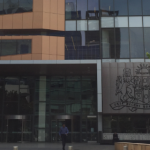The New Bail Act Amendments: Against the Interests of Justice and the Community

In a typical knee-jerk reaction to sensationalised mainstream media reporting over a handful of thousands of bail applications that go through New South Wales courts every year, the Perrottet government has rushed through amendments to the Bail Act 2013 (‘the Act’) which make it even harder for certain defendants to be released on bail.
The amendments
The amendments were introduced to parliament on Tuesday and passed by both Houses just two days later, with little community consultation or consideration of their potential implications.
They are likely to receive assent and become law in the coming days.
The enabling law is the Bail Amendment Act 2022 No 27 (NSW) which inserts the following two sections into the Act:
22B Limitation regarding bail during period following conviction and before sentencing for certain offences
(1) During the period following conviction and before sentencing for an offence for which the accused person will be sentenced to imprisonment to be served by full-time detention, a court—
(a) on a release application made by the accused person—must not grant bail or dispense with bail, unless it is established that special or exceptional circumstances exist that justify the decision, or
(b) on a detention application made in relation to the accused person—must refuse bail, unless it is established that special or exceptional circumstances exist that justify the decision.
(2) If the offence is a show cause offence, the requirement that the accused person establish that special or exceptional circumstances exist that justify a decision to grant bail or dispense with bail applies instead of the requirement that the accused person show cause why the accused person’s detention is not justified.
(3) Subject to subsection (1), Division 2 applies to a bail decision made by a court under this section.
(4) This section applies despite anything to the contrary in this Act. (5) In this section— conviction also includes a plea of guilty.
Note— Conviction is defined in section 4(1) to include a finding of guilt.
30A Bail conditions requiring electronic monitoring
If bail conditions impose a requirement for the accused person to be subject to electronic monitoring—
(a) the bail authority must be satisfied the electronic monitoring is of a standard that at least meets any minimum standards prescribed in the regulations, and
(b) the bail condition must require the electronic monitoring to be of a standard that at least meets any minimum standards prescribed in the regulations.
The new section 22B
The new section 22B adds to the dozens of amendments to the Act since its enactment, each of which have made it more difficult for those accused of criminal offences to be released from prison pending the determination of their cases.
Perhaps the most significant change until now has been ‘show cause’ provisions, which essentially put a defendant in a position of having to prove they should be released from prison rather than the prosecution proving they should be kept behind bars.
In a nutshell, the new section 22B means that those who plead guilty or are found guilty of an offence and are likely to receive a full-time custodial sentence will need to establish special or exceptional circumstances (which is a very high bar) in order to be released on bail pending their sentencing hearings.
Lawyer slam lack of consultation
Legal groups including the NSW Law Society, Aboriginal Legal Service and Bar Association have slammed the government’s failure to properly consult on the changes, with Law Society President Joanne van der Plaat telling the media:
“This would only add pressure to a criminal justice system still struggling with COVID-19 related backlogs.”
“A balance must be struck between reducing the risk of further offending and recognising that an accused is innocent until a court finds them guilty.”
“While the government has described the introduction of these reforms as ‘swift and decisive’, the Law Society considers that insufficient time has been allowed to permit thorough and considered consultation and to ensure the reform is based on evidence.”
“Rushed reform can lead to flawed laws.”
Meanwhile, ALS Chief Executive Karly Warner remarked:
“We are extremely disappointed that the Aboriginal Legal Service and the community-controlled sector was not consulted on this major reform, despite the government’s professed commitment to working in partnership on Closing the Gap.”.
“We were blindsided.”
‘Will be sentenced to imprisonment’
A glaring problem with the section – one which politicians and other bureaucrats may not understand – is that the period between a guilty plea being entered (or a finding of guilt being made) and the sentencing hearing itself can be substantial – often measured in months.
Materials and evidence relating to treatment programs aimed at addressing underlying causes of offending (such as addiction or mental health issues), efforts to make reparations or pay compensation, moves to enter gainful employment and/or otherwise engage in conduct to demonstrate acceptance of responsibility, remorse and the unlikelihood of re-offending are often gathered while at liberty during that time-period, whether or not the engagement in such efforts commenced before the plea being entered.
Section 21A(3) of the Crimes (Sentencing Procedure) Act 1999 makes clear that these matters are relevant to the sentencing process, and the materials are normally presented at the sentencing hearing itself.
It is therefore often the case that a magistrate or judge who – based on the police ‘facts’ and criminal history – initially forms the view that a full-time custodial sentence is warranted will change that view upon consideration of subjective material and/or evidence presented during sentencing as well, of course, as the verbal and/or written submissions of a good criminal defence lawyer.
For this important reason, the inclusion of the words ‘will be sentenced to imprisonment’ demonstrates the legislature’s ignorance of criminal justice process, while also being counterproductive to the objective of encouraging defendants to seek help to overcome underlying issues and prove themselves to be productive members of society – something which ultimately benefits the community as a whole.
Additional pressure on courts and criminal justice system
Ms van der Plaat is correct in her assertion that the amendments are likely to place additional pressure on the courts and criminal justice system as a whole.
This is likely to occur for at least three reasons:
-
Hindering pleas of guilty
On 30 April 2018, New South Wales introduced the Early Appropriate Guilty Plea program which, as the name suggests, aims to encourage defendants to enter guilty pleas at an early stage.
It does this by making the applicable percentage of ‘discount’ for a guilty plea dependent on the timing of the plea during the criminal proceedings.
However, the new section 22B appears to dissuade a person from pleading guilty because the ‘special or exceptional circumstances’ test triggered upon entering the plea will make it very difficult to achieve bail thereafter.
This will lead to certain serious cases being unnecessarily delayed before a plea of guilty is entered, or even certain defendants maintaining pleas of not guilty – which require a far greater amount of court time.
2. Unnecessary bail applications
Consider this: a defendant has been at liberty on bail for many months, or even longer.
He or she has complied with all bail conditions, remained gainfully employed and thereby contributed to the community, participated in programs and – importantly – appeared (or had a lawyer appear on his or her behalf) on all court dates, before entering a plea of guilty to an offence which the magistrate or judge believes will – based on the police ‘facts’ and the person’s criminal history – lead to a full time custodial sentence.
Given the defendant’s compliance with bail, the matter would ordinarily be quickly adjourned to another day for a sentencing hearing.
But under the new rules, a bail hearing will need to occur which will invariably take up far more of the court’s time than a plea and adjournment for sentencing.
3. Increasing the number of inmates incarcerated on remand
A third reason is that the amendment will inevitably lead to a higher number of people being detained in already-overcrowded prisons prior to their sentencing hearings – placing extra pressure on public resources and increasing the costs of incarceration.
At the end of the day, it seems that whoever drafted the rushed amendment has little understanding of the criminal justice process or its objectives, and the new law is simply a way for the current state government to curry favour with a critical mainstream media.





